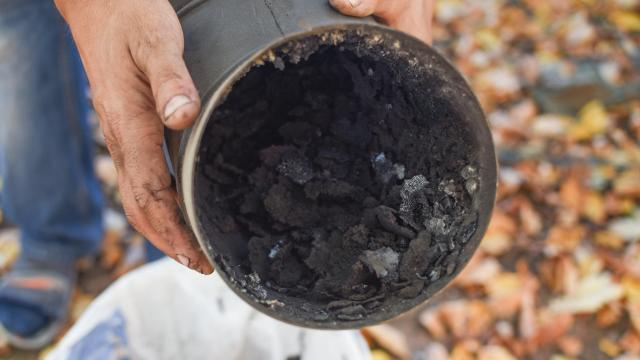When discussing cleaning chimneys, it’s hard not to picture a singing-and-dancing Dick Van Dyke and his unique interpretation of a Cockney accent stepping-in-time on the rooftops of London in “Mary Poppins.”
And while the profession is no longer associated with orphans and child labour, chimney sweeps still exist. In fact, they play an important role in home safety, helping to reduce the number of chimney fires — which, according to the Chimney Safety Institute of America (CSIA), is an average of more than 20,000 each year.
But while a professional chimney cleaning and inspection is recommended once a year — or about once every 80 fires — there are plenty of other things you can (and should) do to prepare your chimney for the winter season (in addition to the professional cleaning). Here’s what to know, courtesy of two articles on BobVila.com.
Make sure there’s a clear path for the smoke
If you live somewhere with trees, remove any branches located directly above the chimney. “Not only do tree limbs present a fire hazard, they can also restrict the proper draft of the chimney and damage the cap,” Donna Boyle Schwartz writes.
Get rid of ashes
Before you start using your fireplace again, make sure that any remaining ashes from the last time you used it are cleared out. “Clean out the firebox once a week, or whenever ash is more than an inch deep,” according to Schwartz. Either sweep or vacuum the ashes out (which should always be fully cooled at this point), and dispose of them outside of your home — ideally in a compost pile or garden bed, if you have either.
Stock up on and store plenty of wood (if your fireplace uses it)
Some fires burn cleaner than others, so make it easy on yourself this winter by getting the supplies you need ahead of time. According to Schwartz, hardwoods like oak, maple, and birch are preferable to soft woods like pine, because they burn hotter and longer. You can also use CSIA-approved fireplace logs, like Duraflame or Pres-to-Logs.
Dried twigs or branches make the best (and safest) kindling, Manasa Reddigari writes, adding that cloth should be avoided as it produces a lot of smoke.
While we’re on the subject of wood, never burn treated lumber or painted wood, because doing so produces dangerous fumes. And as tempting as it may be to stack up firewood inside your home, Schwartz says that’s not the best idea, as it can attract and/or bring pests indoors.

Leave a Reply
You must be logged in to post a comment.